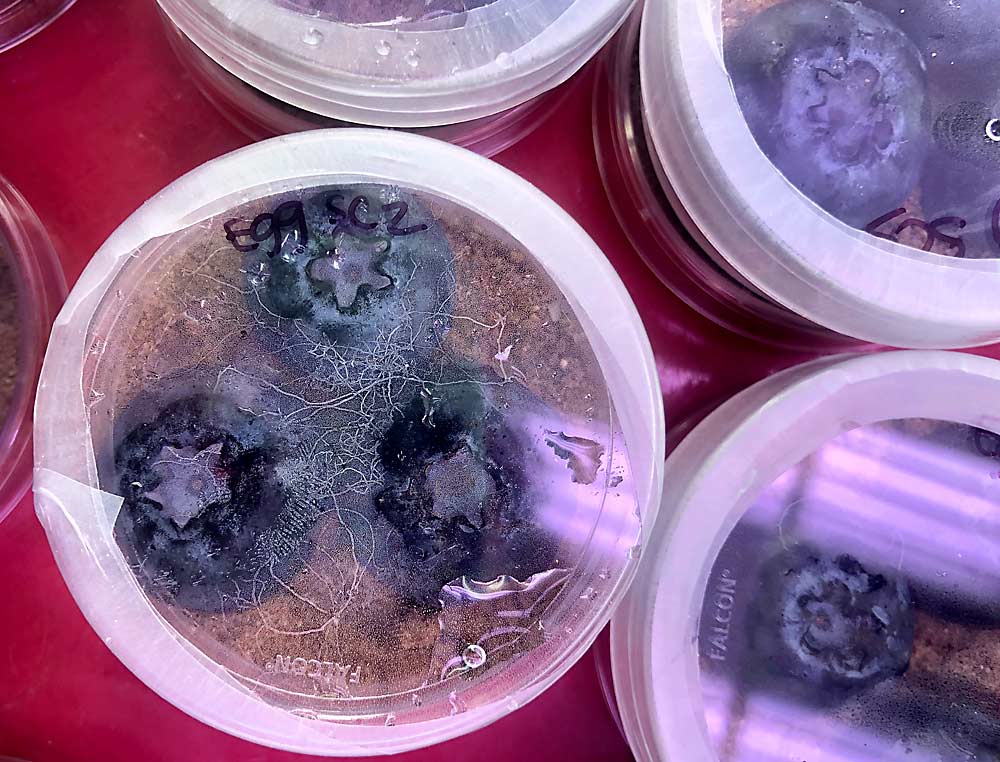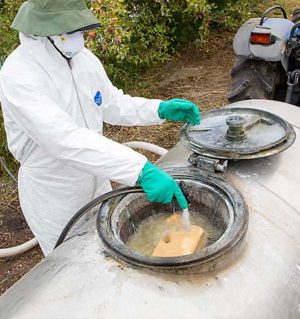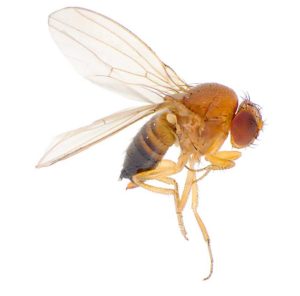
Michigan State University applied nematologist Marisol Quintanilla usually studies the “bad guys” — the plant-parasitic nematodes that pierce roots, suck their juices and cause replant, growth and vigor problems.
But lately, she’s been studying the good guys — entomopathogenic nematodes that kill insects, including plant pests like spotted wing drosophila.
SWD poses a major problem to blueberries and other fruit crops, and growers are spraying a lot of insecticides to manage the pest, she said. And they’d really like to identify alternatives to so much spraying.
A biocontrol such as nematodes might be an option. When SWD larvae drop from the fruit to the soil to pupate, entomopathogenic nematodes in the soil can then crawl into the larvae and feed on them. The nematodes contain bacteria that, once carried into an insect host, cause mortality, according to Quintanilla.
There might be native nematodes that attack and kill SWD, but their populations in commercial crop production are not high enough to gain an adequate level of control. But research on other crops has shown that applying entomopathogenic nematodes can reduce insect pressure, Quintanilla said.
Quintanilla’s research team is conducting laboratory trials on campus and field trials in Southwest Michigan blueberry fields, testing the efficacy of entomopathogenic nematode products on controlling spotted wing drosophila in blueberries. So far, they’ve found one nematode species that’s proven very effective.
Quintanilla’s work is part of a $325,000 grant from the U.S. Department of Agriculture to study SWD control methods. Principal investigator Rufus Isaacs, an MSU entomologist, said the project is studying nonchemical approaches to insect management in blueberry to determine whether they can fit within integrated pest management programs. He said Quintanilla’s research has helped the team figure out which nematode species to test under field conditions.
“The preliminary results are encouraging,” Isaacs said. “I’m looking forward to seeing how they perform in our 2022 field trials.”
Quintanilla’s team has tested two entomopathogenic nematodes, both commonly available as biocontrol spray products. One, Steinernema feltiae, was very effective in trials, while the other, Heterorahbditis bacteriophora, was less effective. S. feltiae caused a significant reduction in SWD adult emergence in both lab and field trials, though the effect in the field lasted about two weeks past the application date, after which SWD numbers went back to their previous levels. Future trials will study if that pattern holds, she said.
Quintanilla said she doesn’t expect entomopathogenic nematodes to be the sole solution to managing spotted wing drosophila, but their control activity might fit well within a more comprehensive pest management program.
—by Matt Milkovich








Leave A Comment